Abstract Art: DIY Art for a Stylish Fireplace Mantel Upgrade
People tend to have strong opinions about abstract art. Some love it, while others dismiss it as unskilled or accidental—arguing that it doesn’t even belong in the category of “real art” because “anyone can do that.” My response? Give it a try! It’s fun, it’s cathartic, and there’s something liberating about creating without a rigid plan, without the pressure of likeness, and without expectations. Abstract art offers an opportunity to explore materials freely and detach from the need for perfection.
If you want to try your hand at creating your own abstract art, this guide will give a brief overview of how I used a thrifted canvas and some everyday materials to make my own, custom, large-format abstract wall art.
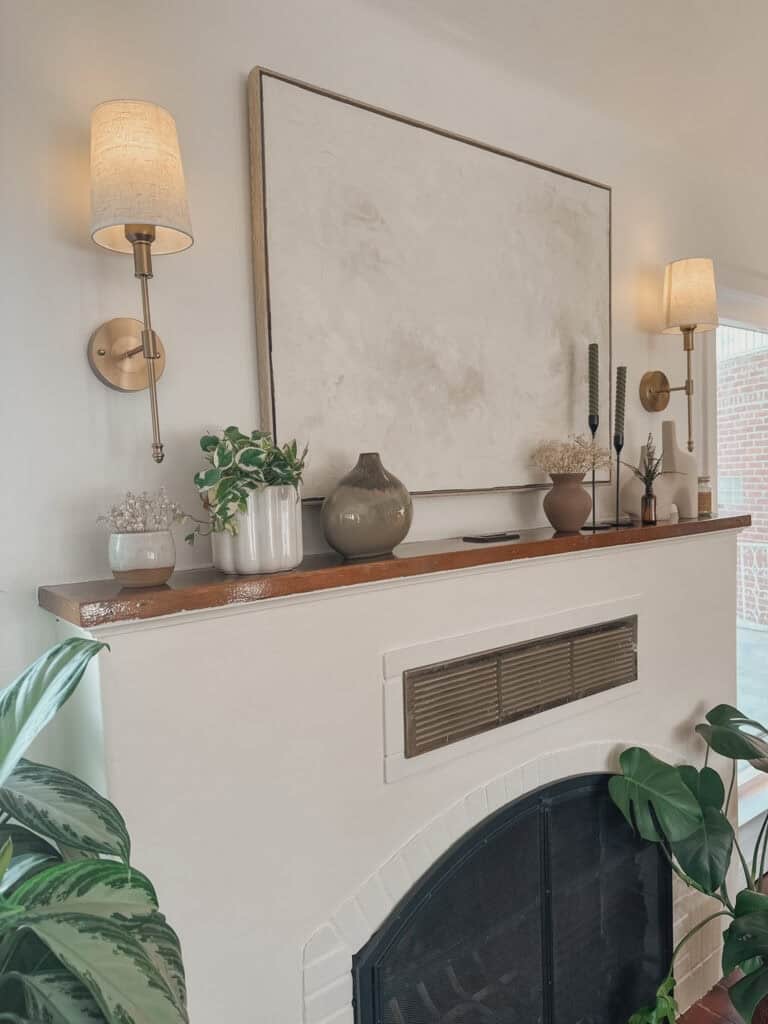
As an Amazon Associate, I receive a small commission (at no additional cost to you) for qualifying purchases on items purchased through the links in this post.
Art is a Mirror and Home is What You Make It
I studied art in college, and at that time, abstract art was everywhere. My professors and the MFA grad students around me were deeply immersed in experimental, conceptual, and abstract work. As a representational portrait artist and symbolic surrealist, I often felt out of place. I didn’t fully grasp the appeal of abstract art then. But over time, I’ve come to appreciate that art mirrors the times we live in. Looking back at the early 2010s, it makes sense. Society was shifting in countless and unprecedented ways, with a massive wave of new tech hitting the landscape of all of our lives and a myriad of complicating factors. Art reflected and responded to that, as it always does.
In recent years, I haven’t created as much art as I’d like, and I’ve often found myself intimidated by the blank canvas. Making abstract art has created space for me to create, without pressure. While I still love the surreal, otherworldly paintings I used to make—like my unfinished portraits of Hela, the Norse goddess of death, or the wild-eyed woman trapped in a gilded cage—they aren’t exactly the kind of pieces I want hanging in my living room, at this point in time.
This is my interpretation of Hela. Please ignore her headdress/crown—it’s a rough block-in, as I have a bad habit of never finishing paintings. I love her and enjoyed painting her, but as I mentioned, she doesn’t quite align with my current home decor aesthetic so she lives in the closet of our art room. Maybe I’ll get around to finishing her one day.
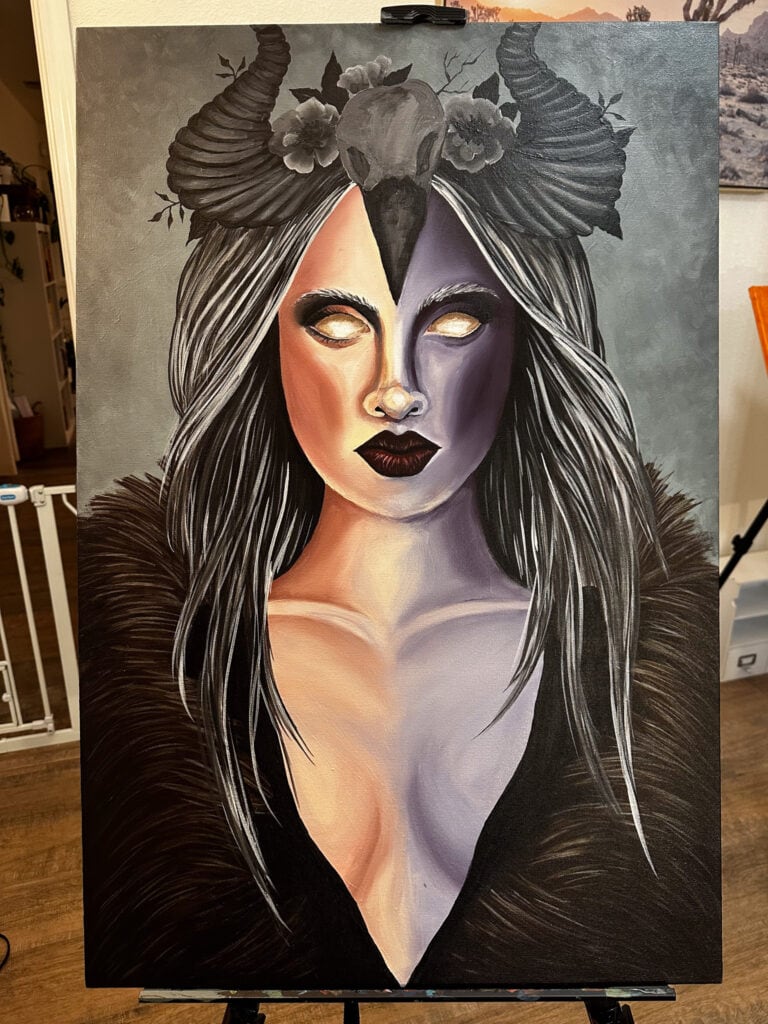
Times and Tastes Change
Like many, I’ve felt an underlying current of anxiety since the pandemic began. And my approach to home decor has shifted because of it. I now strive to create a calm, grounding space—a retreat from the chaos of the outside world. That means neutral tones, earthy textures, white walls, and plenty of plants. Greens, browns, and natural materials dominate my decor choices, and abstract art fits perfectly into this aesthetic.
Creating my own artwork allows me to design pieces that not only complement my space but also bring a sense of tranquility. It’s a reminder of the abstract art I made as a child, sitting by a creek in Northwestern Montana, where I’d crush tiny, colorful river rocks to create my own paints. That simple, natural process still influences the way I approach art today.
Okay, with all that said, let’s get started so you can make your own abstract wall art.
Materials Needed
- Framed Canvas. I love to get these second-hand at thrift stores, but if you can’t or aren’t having any luck at your thrift store, they can be purchased. This one is about the same size as the canvas I was working on this piece 28 x 38 inch framed canvas. But of course, they are available in many sizes. If you want to start smaller, try this 11 x 14 inch framed canvas as the base for your abstract artwork.
- Paint Brushes
- Paint (In colors of your choosing, but I used white, burnt sienna, burnt umber, and raw umber for this piece.
- Baking Soda this is a great opportunity to use the old baking soda at the back of your refrigerator for something creative, and it’s probably time to replace it anyway.
- Joint Compound *This set comes with putty knives/ spatulas, so you can probably skip the palette knife if you don’t already have one or won’t have another use for it.
- Pallete knife
- Other tools for mark-making might include chopsticks, crochet needles, pens, butter knife, fork- really anything you have on hand.
- Cup for water, a palette (a paper plate works), and paper or cloth towels for cleaning your brushes
The Process of Creating DIY Abstract Art
Adding this abstract wall art piece and two wall lamp sconces above our fireplace mantel has added the perfect touch of warmth and texture to our space.
I used a thrifted framed canvas, transforming it with a few simple materials and techniques to achieve a textured, layered look.
1. Thrifting the Frame
I sourced this cool vintage frame from a local thrift store—just kidding. It’s actually a mass-produced canvas print of Joshua Tree, originally sold by World Market (I think). Despite being cheap and mass-produced, the frame itself is solid wood and perfect for repurposing. Upcycling thrifted, framed canvases like this is such an easy way to add character to your space while keeping projects budget-friendly.
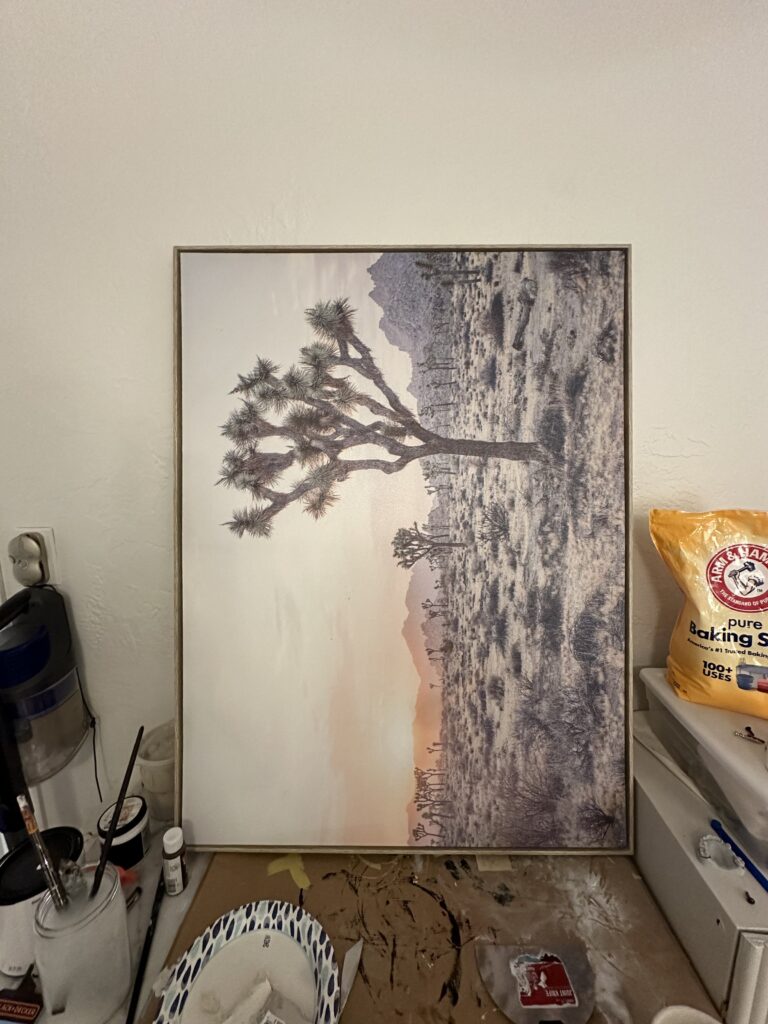
2. Prepping the Canvas
To create a textured foundation, I applied joint compound to the canvas, giving it an organic, sculptural quality. Working with joint compound is a simple yet effective way to achieve that high-end, plaster-art look. Wear a mask or respirator while working with joint compound, please!
Once you’ve achieved the texture you want and covered the original artwork (if applicable), let it dry. Give it at least an hour to fully dry before you start painting.
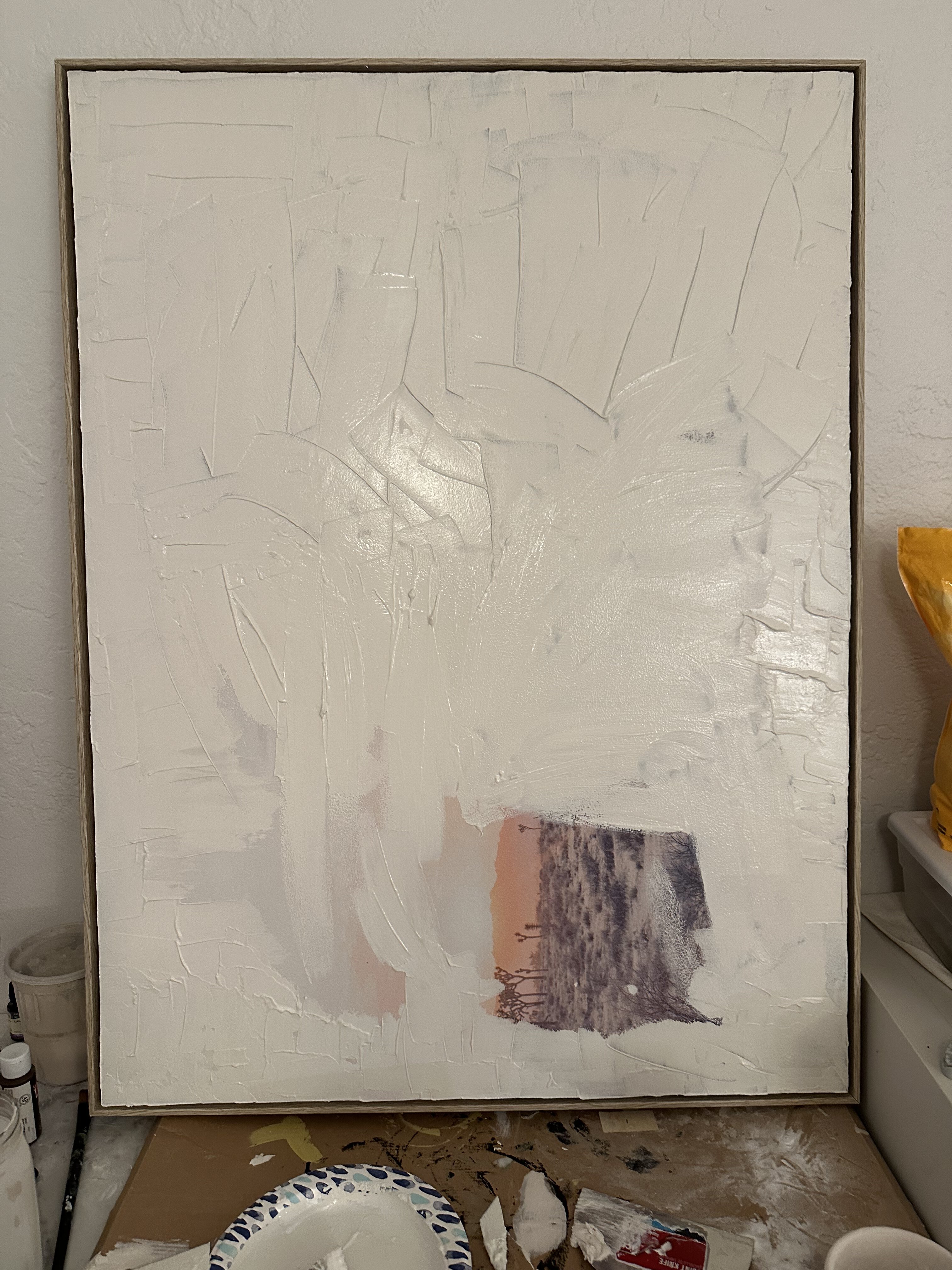
3. Mixing Acrylic Paint with Baking Soda
To build even more texture, I mixed acrylic paint with baking soda. This combination creates a thick, pasty consistency that adds dimension and a soft matte finish.
4. Applying the Paint
Using a painter’s knife, I applied the paint mixture in sweeping, organic motions, letting the texture guide the flow. Various tools—brushes, a chopstick, and a large sewing needle—were used to add subtle details, scratches, and dot patterns, bringing depth to the piece.
Enjoy the Process
There are no rules with this, and that’s part of the beauty. These materials are incredibly forgiving. Joint compound typically dries in 15-30 minutes, depending on how thickly it’s applied. Acrylic paint takes anywhere from 5-15 minutes or longer, depending on how much water you mix in.
Take your time—keeping those drying times in mind—and experiment with the materials in whatever way feels right to you.
If you get stuck, scrap it off and start over or let it dry and work on top.
I got so caught up in the process, listening to music and letting the piece evolve naturally, that I forgot to take photos along the way. But here’s the finished piece, right before it’s hung and styled
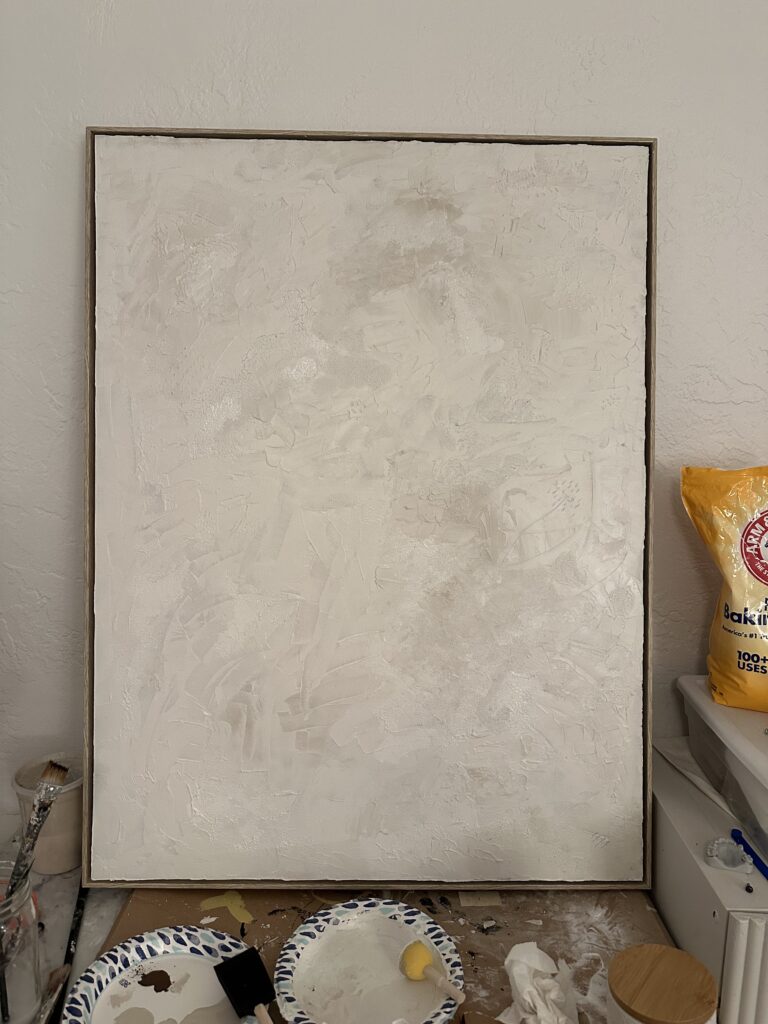
Styling Our Mantel with Abstract Art
Now that our mantel is complete, the abstract piece serves as the perfect anchor for the space. I styled it with a few carefully chosen decor elements:
- Black candlesticks and green rope candles for color, light, and height.
- This neutral-toned organic modern vase I found and love.
- Thrifted amber glass vase filled with cypress to bring in natural elements of winter, in this somewhat liminal winter time between Christmas and Spring.
- Thrifted and upcycled painted vase with baby’s breath. I used the same baking soda and paint method to make this little vase, which was blue-glazed ceramic, look like a terracotta or stone pot.
- Also on the mantel, are candles, a pothos plant, and two other ceramic vessels, one of which was thrifted and the other purchased from a local ceramist at an art show.
This combination keeps the space feeling cozy yet intentional.
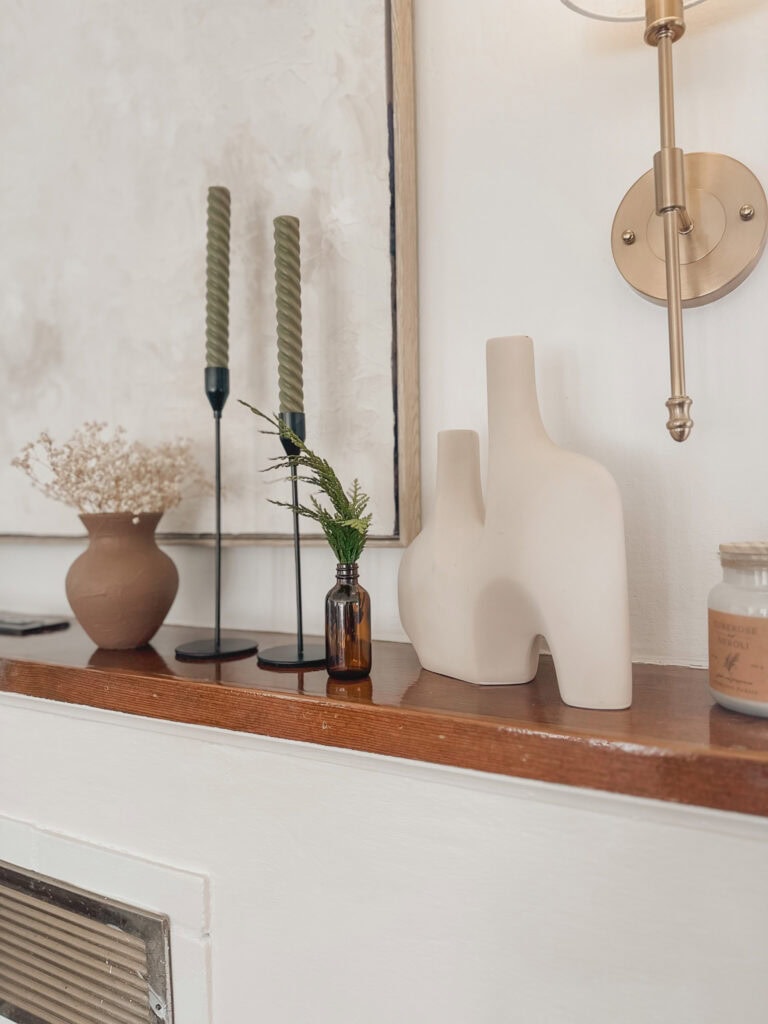
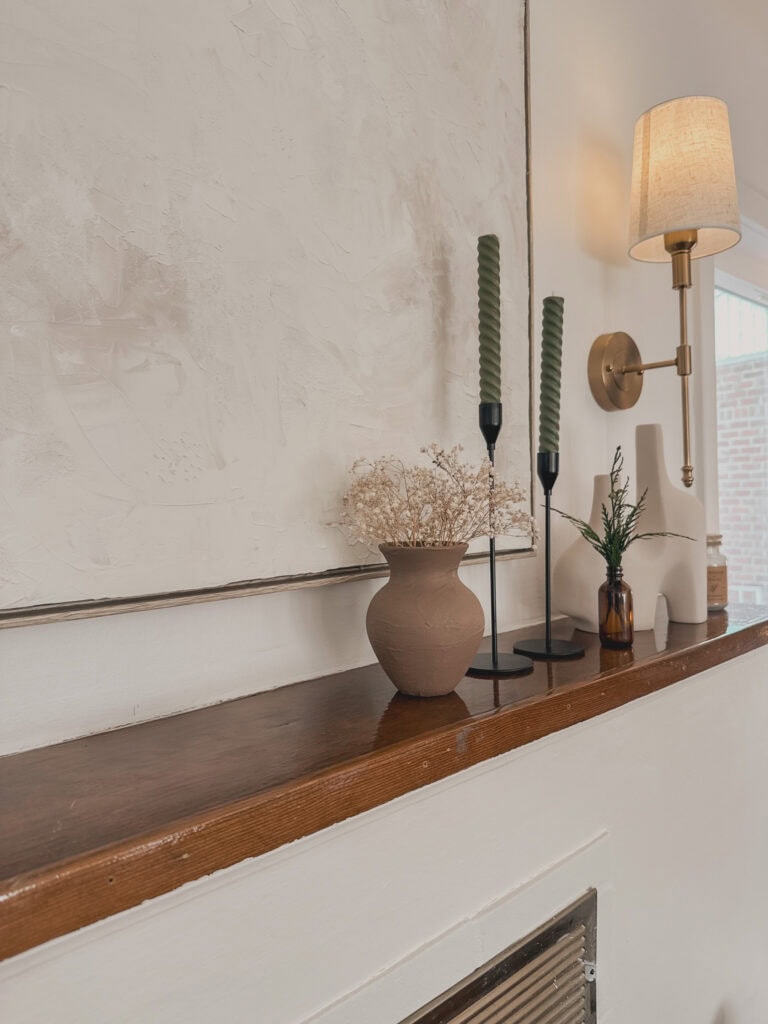
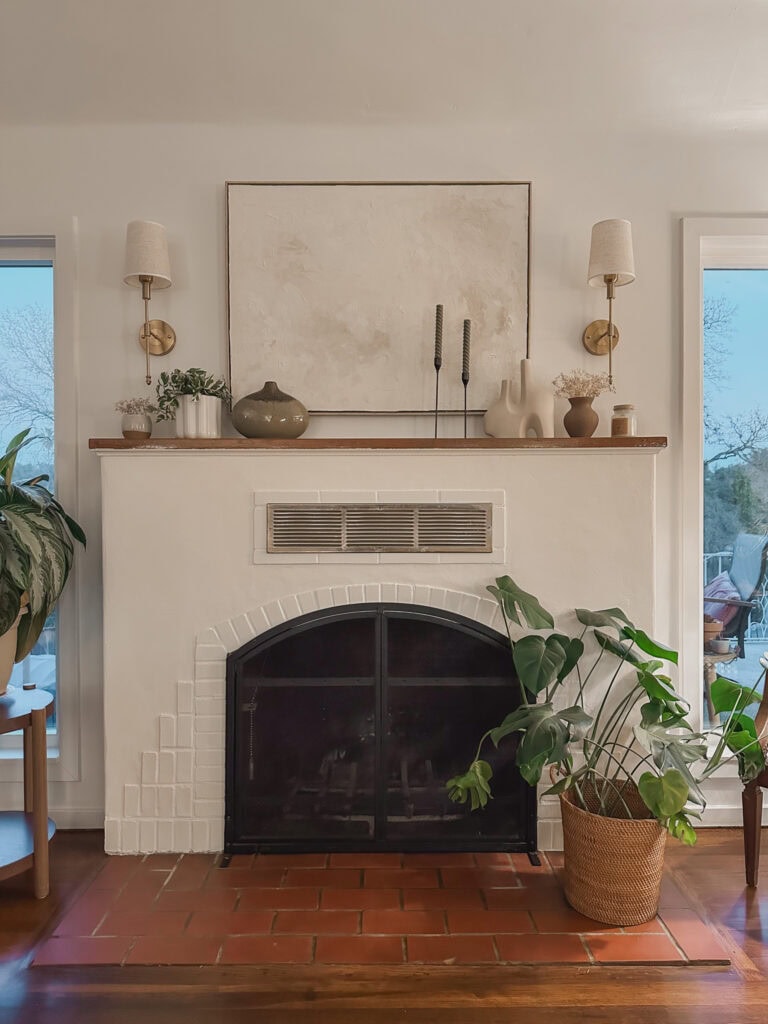
Other Abstract Art Around Our Home
You might have seen these paintings in some of my earlier photos. I created them last spring, right after we moved into our home. I used soil and dried plants from our yard—grinding them up with a mortar and pestle—and mixed them with white paint and baking soda to create subtle, earthy tints. These pieces hold a special meaning, capturing a bit of our new -and at least until the kids grow up- forever home in each brushstroke.
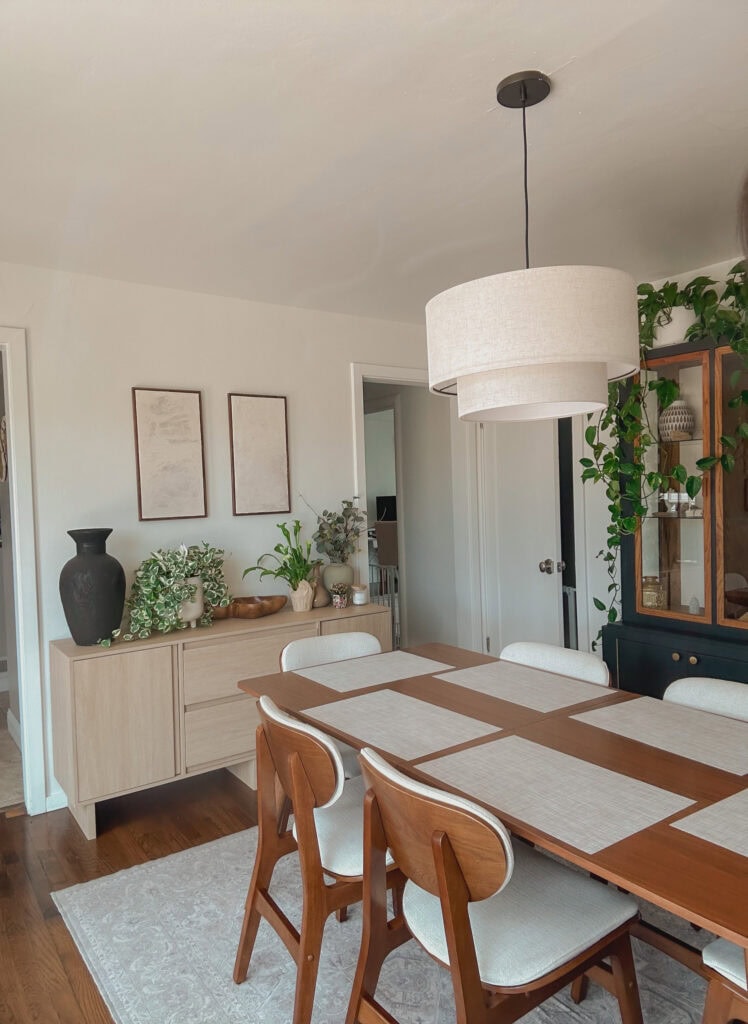
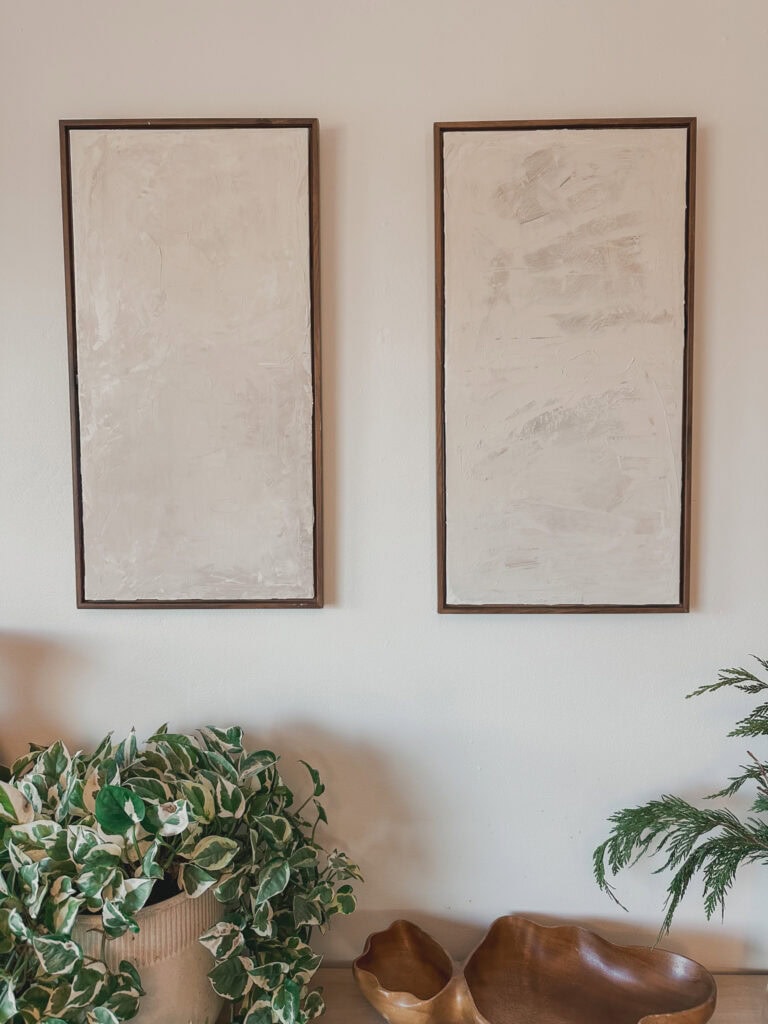
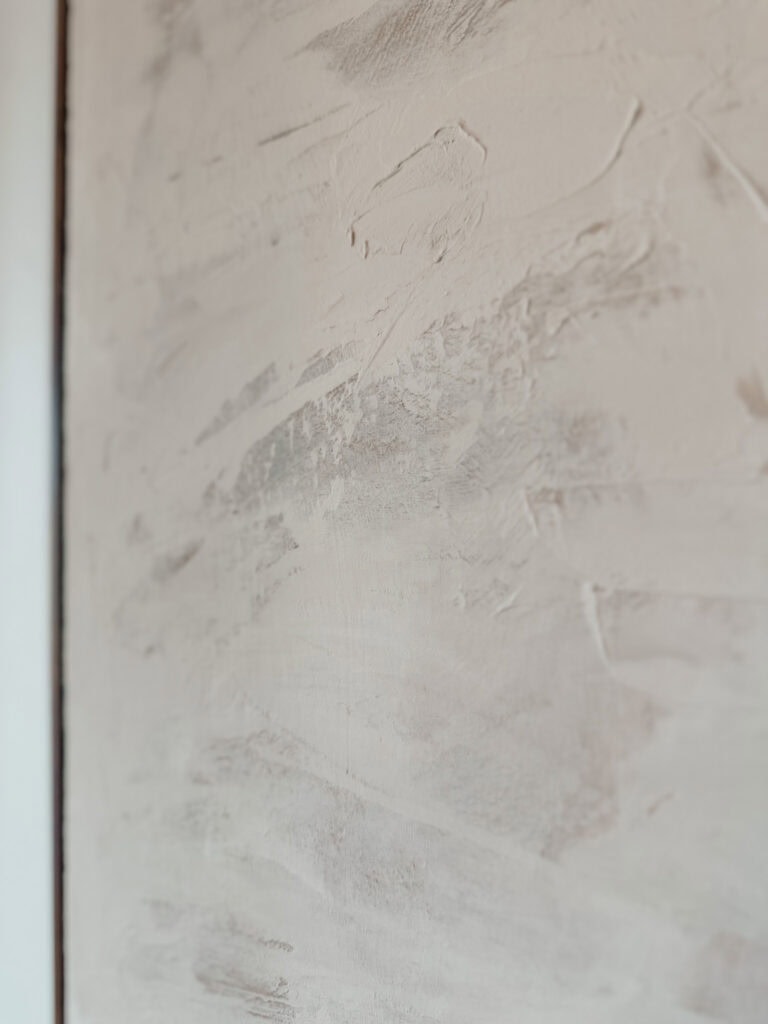
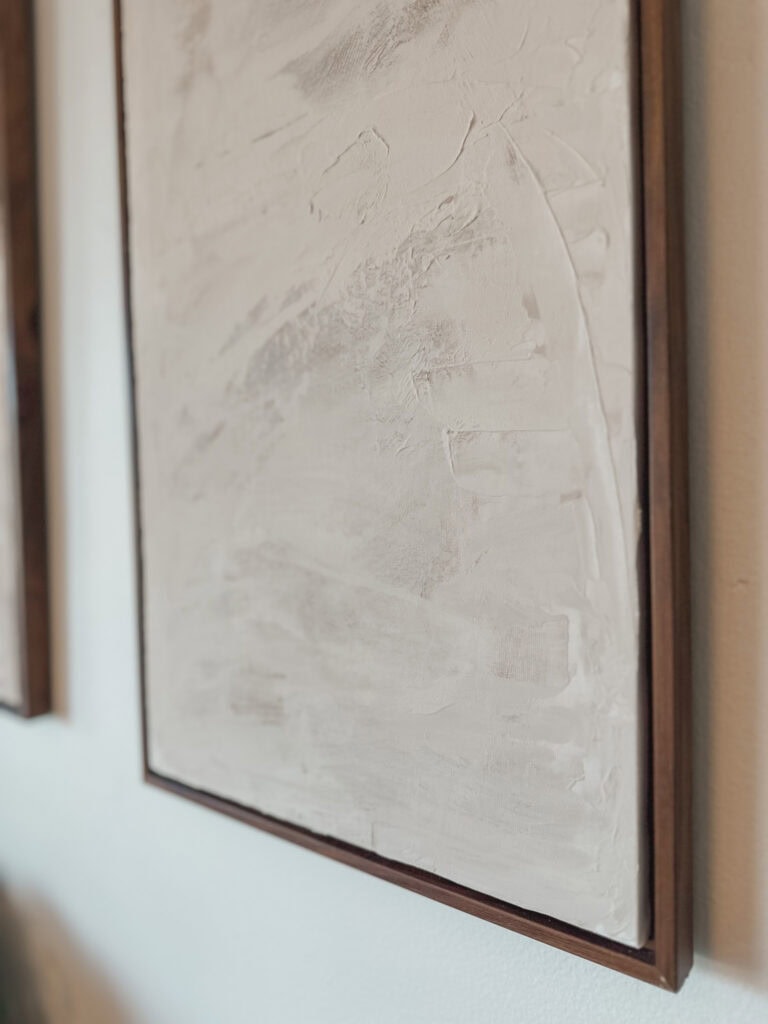
Exploring Natural Materials in Art
Beyond traditional materials, I enjoy incorporating natural elements into my artwork. I often experiment with:
- Grass and Flowers: Pressed into the canvas or ground into pigment for a unique, organic touch.
- Coffee and Spices: Cinnamon, coffee, and nutmeg can add rich, earthy hues and a sensory experience.
- Other Natural Textures: Materials like soil, tea leaves or powdered herbs.
Creating with natural materials allows me to craft pieces that feel grounded and connected to the world outside my windows.
Tips for Creating Your Own Abstract Wall Art
If you’re inspired to create your own neutral abstract art, here are a few tips:
- Experiment with Materials:
Don’t be afraid to incorporate unconventional elements like coffee, spices, or dirt. These add texture and personality to your work. - Start with Thrifted Supplies:
Repurposing old canvases or frames is a budget-friendly and sustainable way to begin. - Trust the Process:
Abstract art is all about intuition. Allow yourself to experiment and make mistakes—sometimes the best ideas come from happy accidents. - Layer, Layer, Layer:
Build up textures and colors in layers to create depth and interest in your composition. - Keep It Personal:
Use colors, materials, or themes that resonate with you. The more personal the piece, the more meaningful it will feel in your home.
What’s Next for Our Home
With the mantel complete, I’m turning my attention to other spaces in our home when it comes to hanging art. We’ve debated adding wood paneling—possibly box molding—to some of our walls, which has put our art-hanging plans on hold. But since we’re not diving into that project just yet, it’s time to start adding art in key areas.
Upcoming projects include:
- The entryway: A gallery wall featuring our artwork and collected pieces.
- The living room: We need several pieces for the corner of the living room next to our built-ins.
- The hallway: A series of smaller, cohesive artworks, but mostly family photos
As both my husband and I are artists, we love curating our home with pieces we’ve created ourselves, alongside prints and originals from local artists and museums. I’ve got some new painting ideas in the works and plan to reframe some of my husband’s portraits—he’s such a talented artist. Between the two of us, 2025 is shaping up to be the year our home is filled with even more color and personal expression.
Final Thoughts
Abstract art isn’t for everyone, and that’s okay—art is deeply subjective. For now, in this season of life, I’m embracing the calm and simplicity that neutral, textured abstract art brings to our home. It’s a reflection of what I need at this moment: a space that feels like a retreat. But art evolves, and so do our tastes. Who knows what I’ll be drawn to next? For now, I’m enjoying the process.
If you’re considering adding your own touch of abstract wall art to your space, I hope this inspires you to experiment and create something uniquely yours. Stay tuned for more updates as I continue decorating and bringing our home to life!

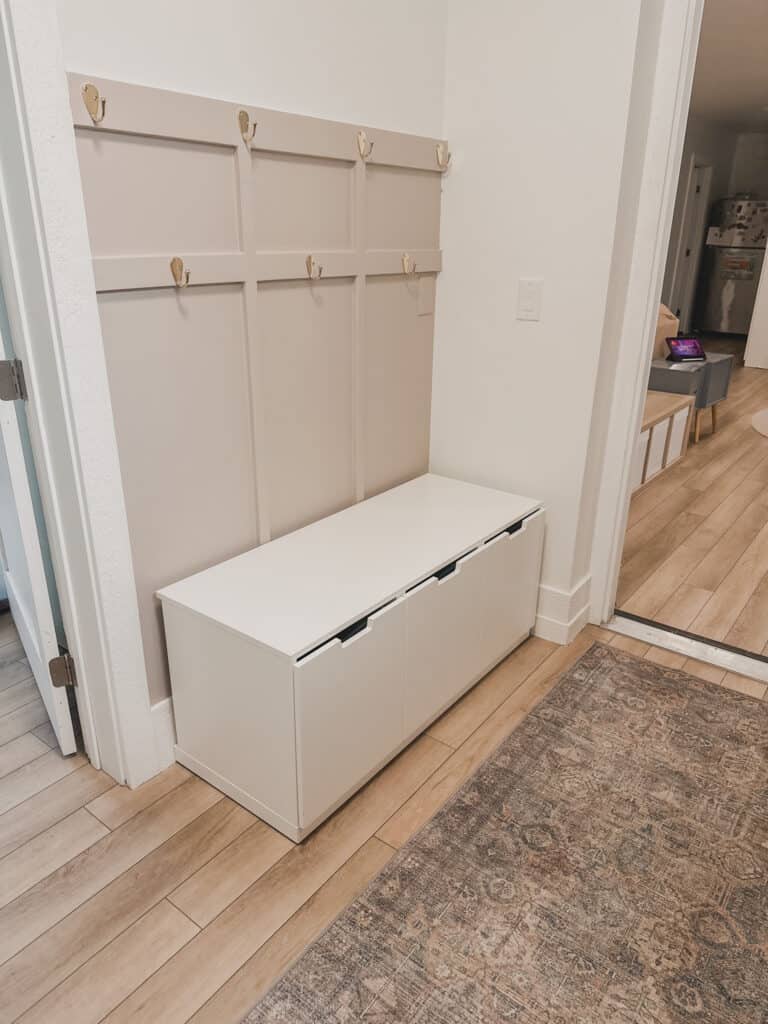
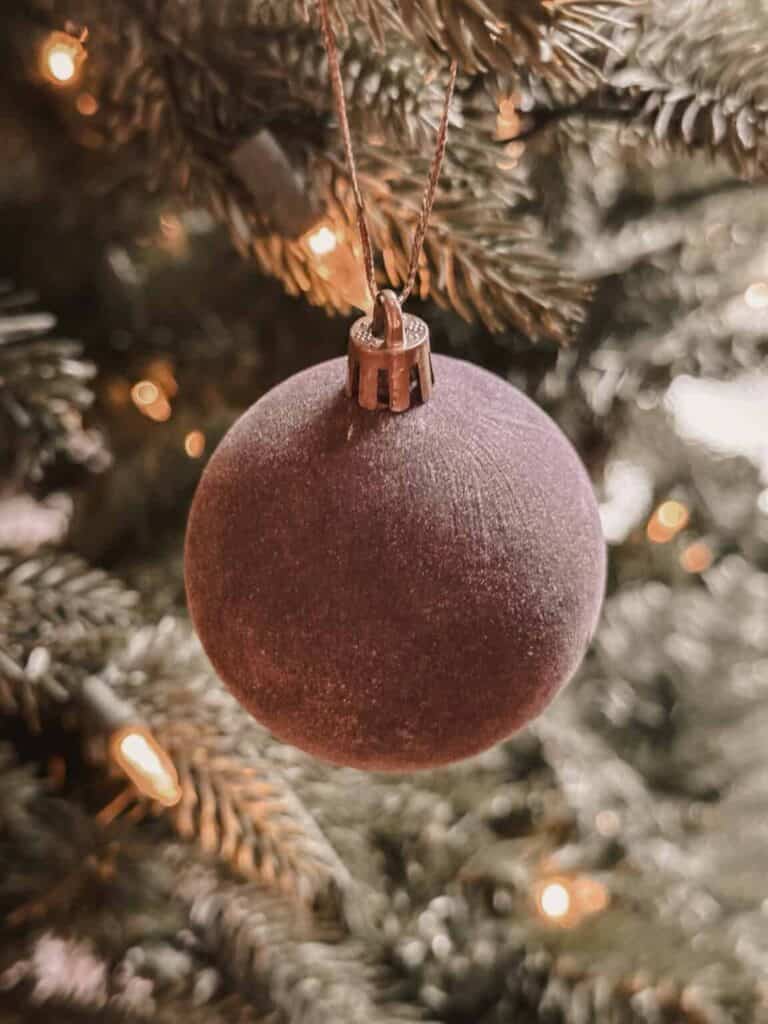
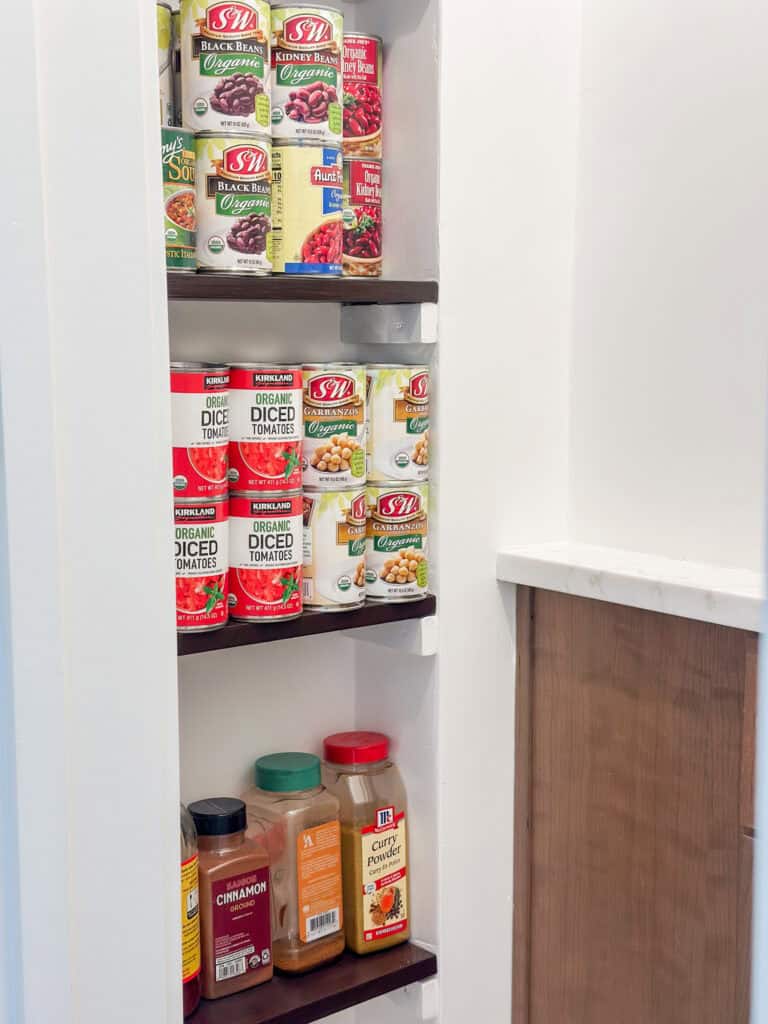
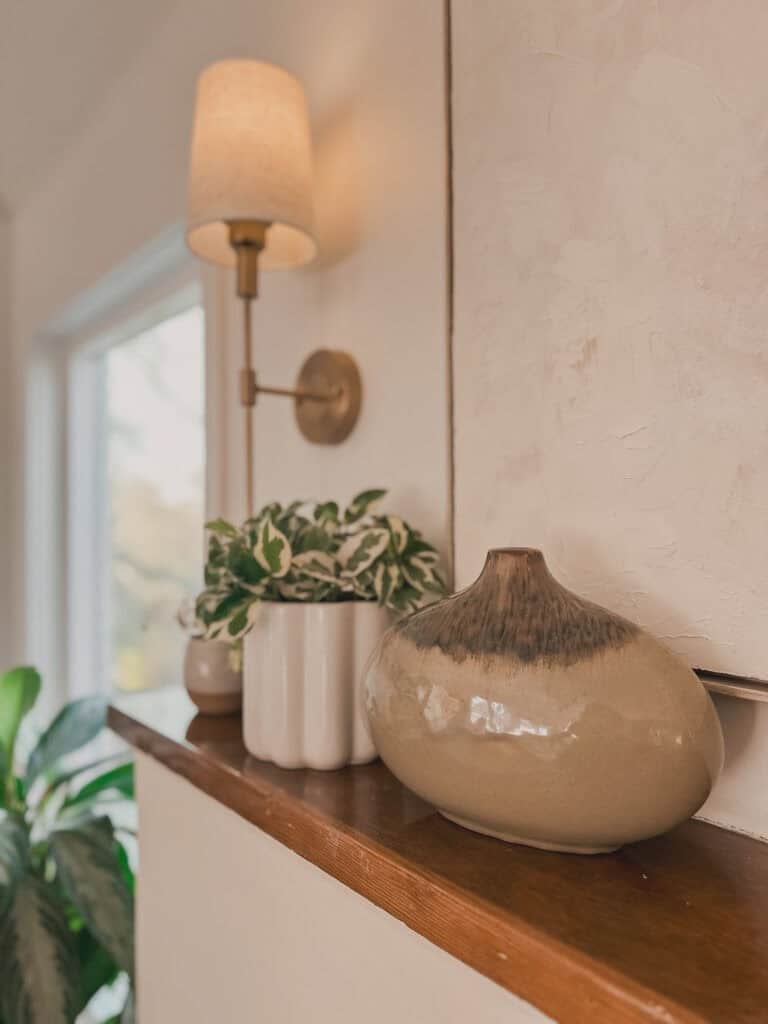
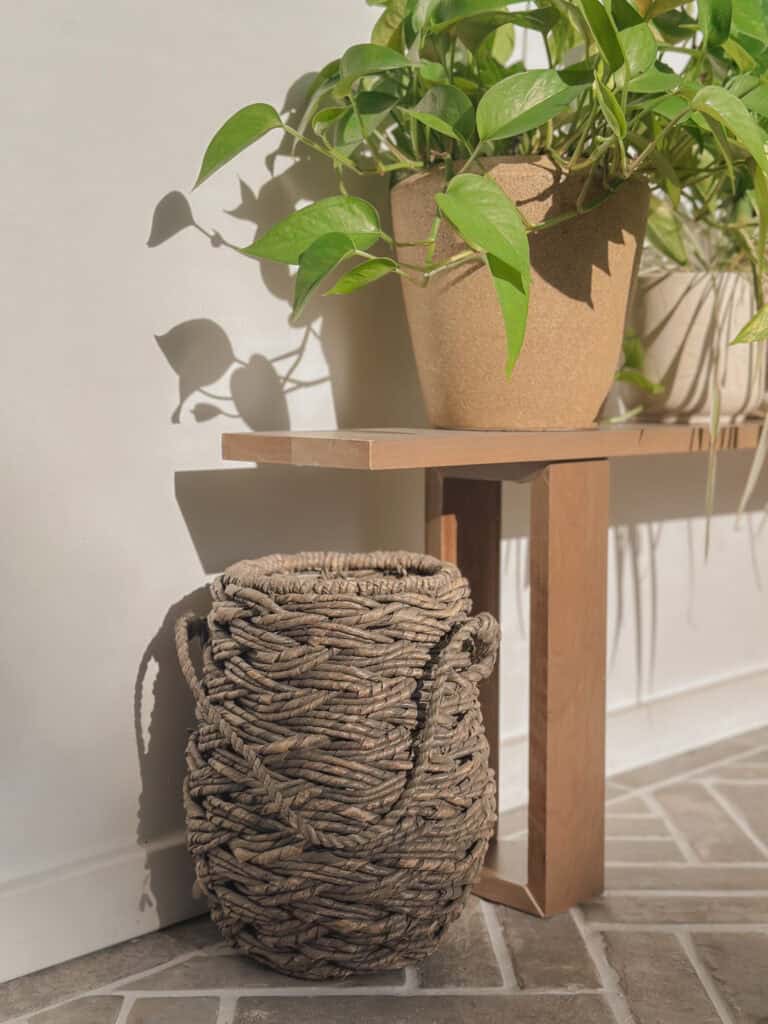
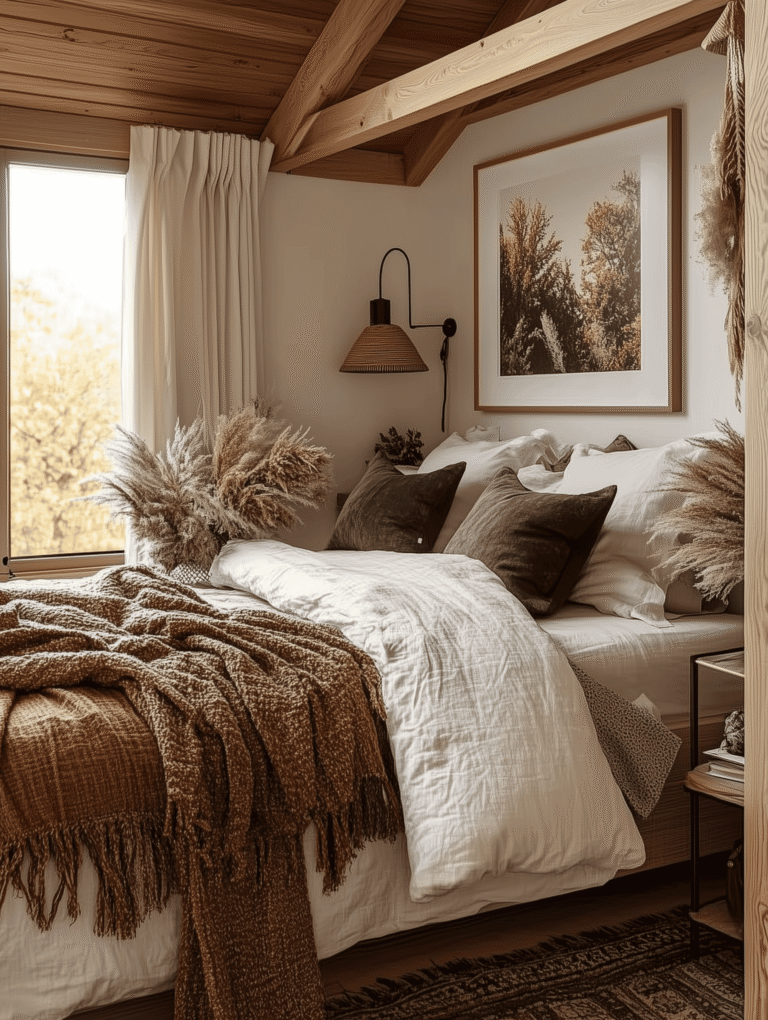
Join the List
Stay up to date & receive the latest posts in your inbox.
0 Comments